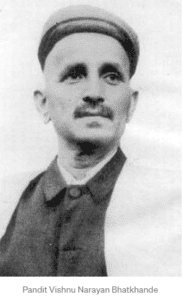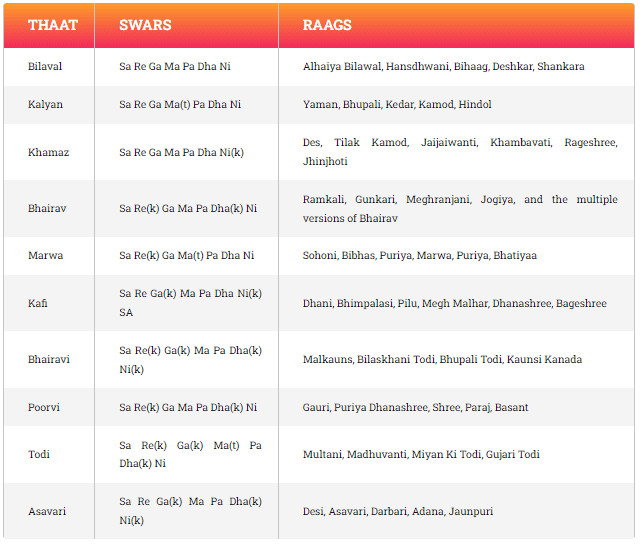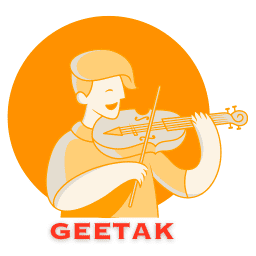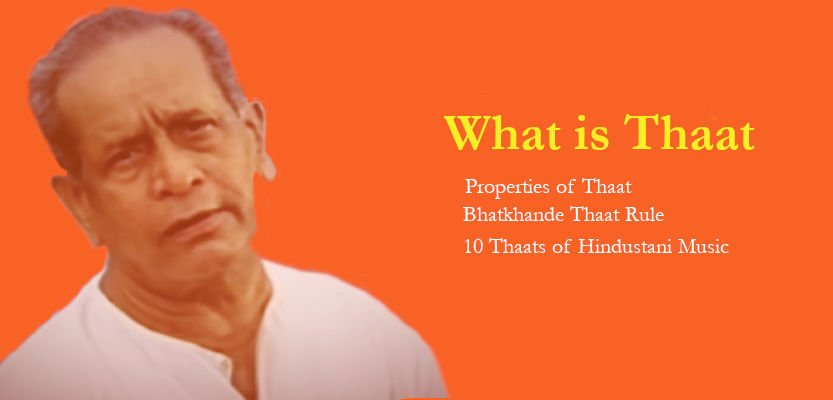In simple words, Thaat is a basic structure of seven Swars / Notes used to form Raag or Raga. In this blog, we will understand why beginners must have a clear understanding of Thaat.
Further, we will understand the rules followed in the formation of Thaat and Why there are ten Thaats in Hindustani Music.
Let me tell you why most beginner fails to continue learning Indian classical singing. The simple reason is insufficient theoretical knowledge of Indian classical music.
Don’t worry 😊, we will learn it together 🤝. It will help you to do experiments while practicing your singing.
Page Contents
ToggleWhat is Thaat ?
Definition of Thaat: A Thaat is a “Parent scale” in Hindustani classical music used to categorize multiple raag under a common group.
In Hindustani classical music (North Indian Music), Thaat is a concept that helps us to group Raags/Ragas of similar Swars and emotions.
Why there are only Ten Thaats in Hindustani Music?
Traditionally music is thought to be made of seven basic notes i.e Sa, Re, Ga, Ma, Pa, Dha, Ni both in Indian and western music.
Thaat is formed by the combination of 7 notes in an octave. But an octave contains 12 notes which are represented as shown below.
Seven basic(Pure) notes: Sa, Re, Ga, Ma, Pa, Dha, Ni
Four Flat (Komal) notes : Re(k), Ga(k), Ma(k), Dha(k), Ni(k)
One Sharp (Teevra) note : Ma(t)
As a result, the twelve notes of an octave are represented as Sa, Re, Re(k), Ga, Ga(k), Ma, Ma(t), Pa, Dha, Dha(k), Ni, Ni(k)
So any combination of 7 notes out of 12 notes will represent a Thaat if it follows the following rule:
RULE: Any parent scale can have just one note from the following pairs “Re, Re(k)“, “Ga, Ga(k)“, “Ma, Ma(t)“, “Dha, Dha(k)” and “Ni, Ni(k)“.
So now if we do some Math then we have the following possibilities:
1 x 2 x 2 x 2 x 1 x 2 x 2 = 32
Consequently, 32 possible Thaats can be formed using the above rule theoretically. Over time these were further condensed to 10 Thaats. Thaat is aaroh of all the Swars/Surs used in raag.

Who created 10 Thaat?
Pandit Vishnu Narayan Bhatkhande, an Indian musicologist, wrote the first modern theory of Hindustani classical music.
He designed a set of rules for the formation of Thaat and proposed the theory of 10 Thaats. He modeled his system after the Melakartha system of Carnatic music classification.
This 10 thaat formula is still very popular and followed in Indian Classical Music.
Thaat Rule :
- Thaat must have seven Swars/Surs – no more no less.
- It has Swars/Surs only in ascending order.
- Both the pure and modified forms of a note/Sur cannot be used in a Thaat.
ex: Re and Re(Komal) cannot be used at the same time. - A Thaat does not generate any mood or emotion. Raag does it.
- Each Thaat has one raag with the same name.
ex: Kafi Raag created from Kafi Thaat.
Raag Rule:
- Raag must have at least five Swars.
- Aroha, Avroha, Pakad, Vadi swar, and Samavadi swar are characteristics of a raag.
- Raag creates mood, and emotions.
- Raag is appealing, entertaining sound (naad) comprising of swars and varnas
Ten Thaats in Hindustani Music
Out of all the throries, Bhatkhande’s theory of ten thaats is still regarded as an important classificatory device for ordering or grouping a huge array of raags.
Download Ten Thaat pdf here : Download
1. Bilaval Thaat
Swars: Sa Re Ga Ma Pa Dha Ni
Bilawal is the most fundamental of the 10 Thaats. All of the swars used in this thaat are shuddha swars. Although Bilawal as a raag is no longer performed. But Alahaiya Bilawal, a minor variant of the raag, is still widely used.
Bilaval Thaat Raags: Alhaiya Bilawal, Hansdhwani, Bihaag, Deshkar, Shankara
2. Kalyan Thaat
Swars: Sa Re Ga Ma(t) Pa Dha Ni
This Thaat is a collection of evening raags. As this Thaat is seen as a blessing-seeking and peaceful practice. It is performed at the start of an evening concert.
Similar to Bhairav, this Thaat is broad and has numerous forms, including Shuddha Kalyan, Shyam Kalyan, Yaman Kalyan, Anandi Kalyan, Khem Kalyan (Haunsdhwani + Yaman), Savani Kalyan, etc.
Kalyan Thaat Raags: Yaman, Bhupali, Kedar, Kamod, Hindol
3. Khamaz Thaat
Swars: Sa Re Ga Ma Pa Dha Ni(k)
The next thaat is Khamaj, which is obtained by substituting Komal Nishad for Bilawal’s Shuddha Nishad.
Since the raags in this thaat are so rich in Shringar Ras (romantic). That’s why light classical thumris, tappas, horis, and kajris are frequently performed.
These Thaat raags are so sensuous that even now, the raag Khamaj is regarded as a “flirtatious” raag.
Khamaz Thaat Raags: Des, Tilak Kamod, Jaijaiwanti, Khambavati, Rageshree, Jhinjhoti
4. Bhairav Thaat
Swars: Sa Re(k) Ga Ma Pa Dha(k) Ni
Komal Rishabh and Komal Dhaivat are used in Bhairav Thaat Raags.
You can see a lot of variations on raag Bhairav including (but not restricted to) Ahir Bhairav, Alam Bhairav, Anand Bhairav, Bairagi Bhairav, Beehad Bhairav, Bhavmat Bhairav, Devata Bhairav, Gauri Bhairav, Nat Bhairav, Shivmat Bhairav.
This raag is usually performed in a devotional mood in the early morning hours.
Bhairav Thaat Raags: Ramkali, Gunkari, Meghranjani, Jogiya, and the multiple versions of Bhairav
5. Marva Thaat
Swars: Sa Re(k) Ga Ma(t) Pa Dha Ni
A komal Rishabh is added to Kalyan thaat to create Marwa thaat. The Marwa family raags have a distinct and recognized mood. The roles of Komal Rishabh and Shuddha Dhaivat are crucial.
This Thaat conveys the mood of the sunset and so has a feeling of nervousness.
Marva Thaat Raags: Sohoni, Bibhas, Puriya, Marwa, Puriya, Bhatiyaa
6. KafiThaat
Swars: Sa Re Ga(k) Ma Pa Dha Ni(k)
A komal Rishabh is added to Kalyan thaat to create Marwa thaat. The Marwa family raags have a distinct and recognized mood. The roles of Komal Rishabh and Shuddha Dhaivat are crucial.
This Thaat conveys the mood of the sunset and so has a feeling of nervousness.
Kafi Thaat Raags: Dhani, Bhimpalasi, Pilu, Megh Malhar, Dhanashree, Bageshree
7. Bhairavi Thaat
Swars: Sa Re(k) Ga(k) Ma Pa Dha(k) Ni(k)
All of the Komal swars, including Rishabh, Gandhar, Dhaivat, and Nishad, are used in Bhairavi Thaat. However, the vocalists are free to use any combination of the 12 swars while singing compositions in Bhairavi raag.
Bhairavi is a powerful raag filled with devotion and compassion. Bhairavi is actually performed early in the morning in a peaceful, serious, and occasionally sad mood.
Pictorially, Bhairavi is represented in female form, as the wife of Bhairav(Lord Shiva).
Bhairavi Thaat Raags: Malkauns, Bilaskhani Todi, Bhupali Todi, Kaunsi Kanada
8. Poorvi Thaat
Swars: Sa Re(k) Ga Ma Pa Dha(k) Ni
When Komal Dhaivat is added to Marwa thaat, it becomes Poorvi thaat.
These Thaat raags usually feature Komal Rishabh, shuddha Gandhar and Shuddha Nishad along with teevra Madhyam, the note which distinguishes evening from the morning raags (dawn and sunset).
Poorvi’s thaat raag is very serious, quiet, and mysterious, and is played at sunset.
Poorvi Thaat Raags: Gauri, Puriya Dhanashree, Shree, Paraj, Basant
9. Todi Thaat
Swars: Sa Re(k) Ga(k) Ma(t) Pa Dha(k) Ni
Todi is the king of all thaats. Todi is generally performed in the late morning and it symbolizes the atmosphere of affection with a peaceful and loving attitude.
Todi Thaat Raags: Multani, Madhuvanti, Miyan Ki Todi, Gujari Todi
10. Asavari Thaat
Swars: Sa Re Ga(k) Ma Pa Dha(k) Ni(k)
Add Komal Dhaivat to Kafi thaat and you get Asavari Thaat.Asavari raga is rich in tyag, the attitude of sacrifice and resignation, as well as sorrow.
It works well in the early morning. However, significant evening/night raags like Darbari and Adana also employ Asavari Thaat notes with a variety of ornaments, stress points, and styles.
Asavari Thaat Raags: Desi, Asavari, Darbari, Adana, Jaunpuri
Types of Ten Thaats in Hindustani Music ( Table format )

Its been more than 90 years since this Thaat system was introduced. Thereafter many different systems came but Bhatkhande’s theory of ten thaats is the most popular and widely followed to date.
faqs
Vishnu Narayan Bhatkhande
There are Ten Thaats in Hindustani Music
No one knows exactly how many raag there are in Indian classical music.
According to classical music, there are countless ragas, but if you follow the theory of Venkatamakhin one Thaat = 484ragas.
Then, Hindustani classical music has 10 Thaat so, there are 484×10=4840 ragas.
Carnatic music has 72 melas (Thaat) so, there are 484×72= 34,848 ragas.
So, the total number of ragas is approximately 34,848+4840=39696 ragas (This is just guesswork). There are countless ragas.
Thaat: A thaat, unlike a raga, does not have separate ascending and descending lines. A thaat has no emotional quality (which ragas, by definition, do have) Thaats are not sung but the ragas produced from the thaats are sung.
Raag: It is generated from Thaat. Swars are arranged in ascending order only. Each raag has its own emotional connect.
Thaat is basically a formula using which raag is formed. This formula is of no use if we don’t know how to sing a raag.
A Thaat can have many raags and each raag is sung differently.
Here comes, Pakad in the picture. Pakad tells us how to sing a raag. In other words, you can easily identify a raag if you know it’s Pakad.
ex: Khamaj Thaat has 2 ragas Desh raga and Tilak Kamod raga.
The surs or notes in Khamaj Thaat are Sa Re Ga Ma Pa Dh Ni(K). Thus both Desh and Tilak Kamod ragas have these surs in them but they are sung very differently.
Janak Raga or Ashray Raga is the raga after which the thaat is named.
Ex: Bilawal Thaat, is named after the raga Alhaiya Bilawal. So, Alhaiya Bilawal raga would be the Janak raga of Bilawal thaat.
Read above : Thaat theory section
There are numerous ragas that do not fit into the Thaat system. Some ragas are not part of the Hindustani Classical Thaat System because they were derived from Carnatic music. Among them are:
- Kirvani
- Nat Bhairav
- Charukeshi
- Madhuvanti
- Ahir Bhairav
A Thaat must have seven out of twelve notes in ascending sequence [seven Shuddha, four Komal (Re, Ga, Dha, Ni), and one teevra (Ma)].
The Natya Shastra identifies and discusses twenty-two shrutis and seven swara per octave. It has been used in several contexts throughout the history of Indian music.
Also Read: How to do effective riyaz at home

